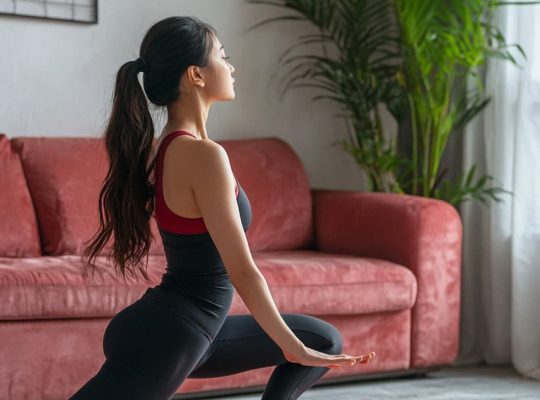As we age, it becomes increasingly important to prioritize our fitness and mobility. Regular exercise not only helps seniors maintain their overall health but also improves balance, strength, flexibility, and mental well-being. Engaging in home workouts is a convenient and effective way for seniors to stay active and independent, even when the gym or community center is not easily accessible. In this article, we will explore various home workout options specifically tailored for them, providing a comprehensive guide.
Consultation and Safety First
Before embarking on any new exercise regimen, it is crucial to consult with a healthcare professional, particularly for individuals with pre-existing health conditions. This step ensures that you can engage in activity safely and take any necessary precautions. Your healthcare provider can provide personalized recommendations and offer insights on any modifications you might need to make to suit your specific needs.
Warm-Up and Stretching
Begin each home workout session with a gentle warm-up routine to prepare your body. Warm-ups can include light cardio activities such as walking in place or marching. Afterward, focus on stretching major muscle groups, targeting areas like the neck, shoulders, back, hips, and legs. Stretching helps increase flexibility and range of motion, reducing the risk of injuries.
Aerobic Exercises
They are excellent for improving cardiovascular health, endurance. Seniors can engage in low-impact activities that are gentle on the joints while still providing a significant workout. Options include brisk walking indoors or outdoors, stationary cycling, swimming, or even dancing to your favorite tunes. Aim for at least 150 minutes of moderate-intensity aerobic exercise per week, spread out over several days.
Strength Training
They is crucial to maintain muscle mass, bone density, and functional independence. Simple exercises such as bodyweight squats, standing or seated leg lifts, and wall push-ups can effectively target major muscle groups. Resistance bands and light dumbbells can be incorporated to add resistance and challenge the muscles further. Start with lighter weights and gradually increase the load as your strength improves. Aim for two to three strength training sessions per week, focusing on all major muscle groups.
Balance and Stability Exercises
Balance and stability exercises are particularly important as they help prevent falls, improve coordination, and enhance overall stability. Simple exercises like standing on one leg for 30 seconds, heel-to-toe walks, or using a stability ball can significantly improve balance. Their can be done using a chair or a wall for support, gradually reducing assistance as your balance improves.
Flexibility and Stretching
Maintaining flexibility is essential to preserve joint health, reduce muscle stiffness, and enhance mobility. Gentle yoga or tai chi routines specifically designed can be excellent options. Remember to breathe deeply and hold each stretch for at least 15 to 30 seconds without bouncing.
Mind-Body Activities
Seniors can benefit greatly from mind-body activities that promote mental relaxation and stress reduction. Engaging in activities such as meditation, deep breathing exercises, or practicing mindfulness can have a positive impact on overall well-being. Consider adding these activities to your daily routine, either before or after your workout session.
Modifications and Adaptations
It’s important to listen to your body and make any necessary modifications or adaptations to exercises as needed. If a particular movement causes pain or discomfort, seek an alternative exercise that targets the same muscle group but with less strain. Remember, it’s not about competing with others; the goal is to stay active and maintain fitness at your own pace and comfort level.
With home workouts, seniors can conveniently incorporate exercise into their daily routines, regardless of their age or location. By following a well-rounded routine that includes warm-ups, aerobic exercises, strength training, balance exercises, flexibility work, and mind-body activities, they can significantly improve their overall well-being. Always remember to consult with a healthcare professional, start slowly, and gradually progress at your own pace. With dedication and consistency,they can enjoy the countless benefits of regular exercise and age gracefully.






